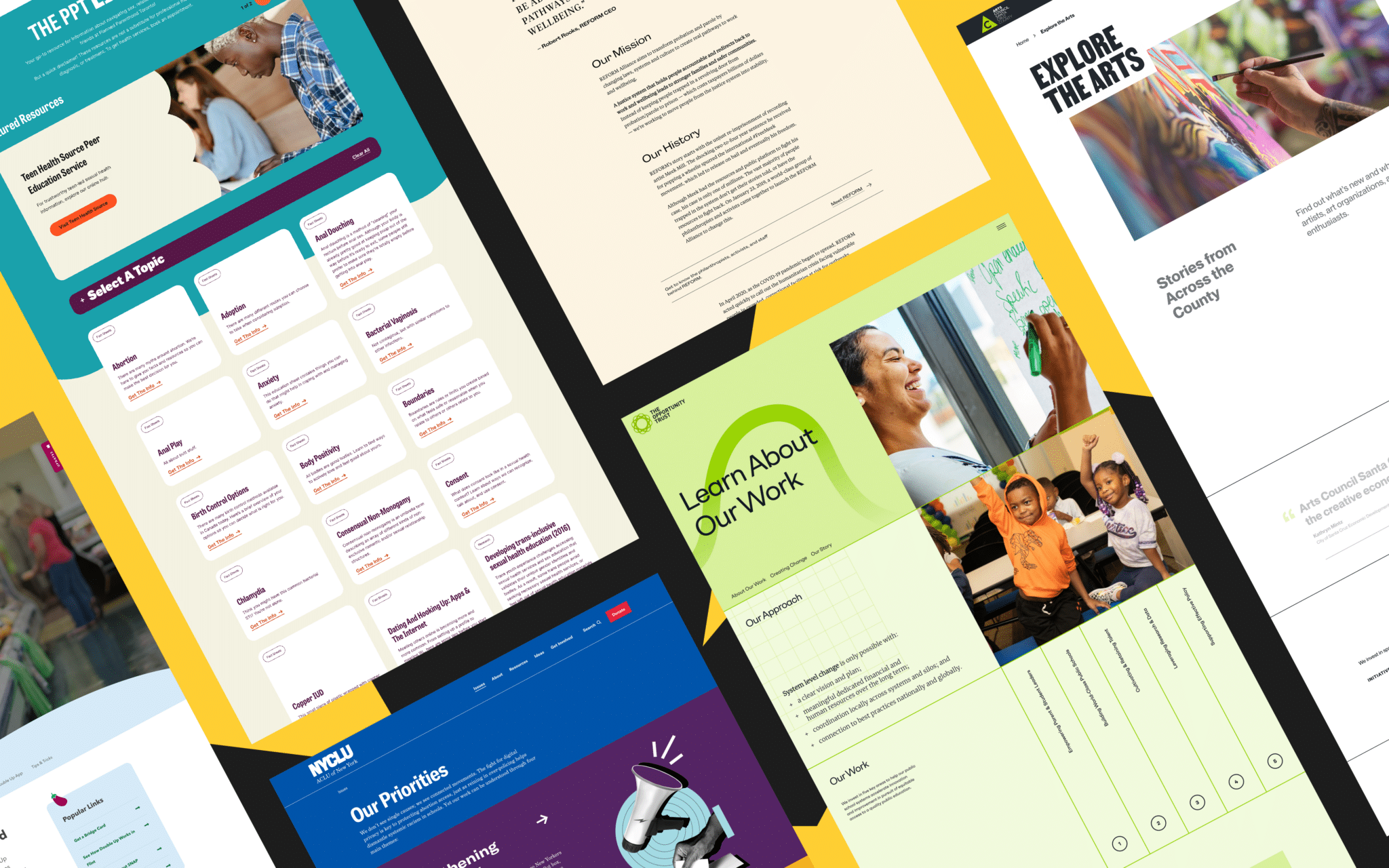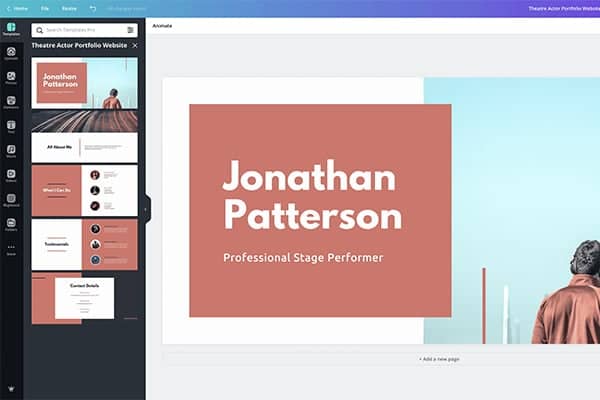How Website Design Impacts Brand Perception and Trustworthiness
How Website Design Impacts Brand Perception and Trustworthiness
Blog Article
Boost Involvement With Ingenious Site Design Solutions
In the realm of digital interaction, the importance of cutting-edge web site layout solutions can not be overstated. A thoughtfully crafted user experience, underpinned by strategic aesthetic layout and interactive elements, can significantly enhance user engagement. By exploring different techniques such as receptive layout and personalized web content, organizations can create a platform that not just mesmerizes individuals yet also fosters lasting commitment. The challenge exists in understanding the subtleties of individual actions and choices. This increases a crucial question: what certain techniques can be carried out to make sure that a website continues to be user-centric and compelling?

Comprehending User Experience
Recognizing customer experience (UX) is essential for producing efficient internet site layout options, as it directly influences how individuals connect with electronic systems. A thorough UX approach includes numerous aspects, including access, user, and use fulfillment, all of which contribute to the general efficiency of an internet site.
To start with, functionality focuses on how conveniently customers can navigate and find the information they seek. Ease of access guarantees that all individuals, consisting of those with impairments, can properly communicate with the web site.
Moreover, understanding individual personalities is essential for tailoring the experience to fulfill specific audience needs. By conducting user research and screening, developers can collect understandings that notify style decisions, guaranteeing the site not only fulfills aesthetic goals however additionally fulfills practical demands. Inevitably, a thoughtful approach to UX design cultivates interaction, urges retention, and enhances overall individual complete satisfaction, which are essential for the success of any digital system.
Visual Layout Techniques
Including effective visual style strategies is necessary for catching user focus and improving the general user experience on a web site. A well-thought-out aesthetic hierarchy guides individuals through the material, allowing them to conveniently soak up and browse info. This can be attained via the calculated use of typography, shade systems, and spacing, which jointly create a natural and appealing format.
Shade plays a crucial role in stimulating emotions and establishing brand name identity. Using a balanced shade palette that aligns with the brand's principles can cultivate familiarity and trust fund. In addition, incorporating top notch images and graphics improves visual allure and can substantially improve customer engagement.
Whitespace, usually ignored, is similarly important as it allows content to take a breath and stops frustrating customers with clutter. It helps with easier analysis and understanding, resulting in a more delightful browsing experience.
Last but not least, consistency in style components-- such as button typefaces, symbols, and designs-- ensures a smooth individual journey, strengthening the brand's professionalism and trust. By tactically applying these visual style approaches, sites can not only attract site visitors however additionally encourage them to remain longer and involve more deeply with the web content.
Interactive Elements for Engagement
Engaging users properly typically pivots on the implementation of interactive aspects that welcome involvement and cultivate a dynamic browsing experience. These components, consisting of quizzes, surveys, and interactive infographics, encourage individuals to proactively participate as opposed to passively take in material. By incorporating such functions, internet sites can not just catch interest but also boost individual retention.

Gamification is one more powerful approach. Incorporating game-like components, such as achievements or Full Report benefits for finishing jobs, can change ordinary communications right into pleasurable experiences. This approach not just enhances interaction but also motivates customers to return, creating a devoted audience.
Moreover, interactive elements can promote social sharing, enhancing a web site's reach. Features like remark sections, share buttons, and user-generated material locations foster community interaction, turning visitors right into active participants. website design. Eventually, the strategic use interactive elements is necessary for developing a compelling and engaging internet site that reverberates with customers
Receptive and Adaptive Style
A properly designed web site has to focus on responsive and adaptive layout to ensure ideal customer experiences across a variety of gadgets and display sizes. Receptive layout utilizes liquid grids and adaptable pictures, enabling the design to instantly readjust based on the customer's display size. This technique makes sure that individuals can quickly browse and interact with the content, despite whether they are using a tablet computer, desktop, or smart device .
On the other hand, adaptive style makes use of predefined formats that are customized to specific tool categories. This means that the website identifies the type of device being used and offers the ideal layout, which can improve filling times and enhance the display of crucial aspects. While both approaches aim to enhance usability, receptive style is frequently favored for its fluidity and smooth shift in between gadgets.
Including adaptive and responsive design not only boosts individual complete satisfaction but also positively influences online search engine positions. Internet search engine prioritize mobile-friendly websites, therefore enhancing visibility and attracting even more site visitors. As a result, buying these design strategies is crucial for companies wanting to engage their target market successfully and preserve an affordable side in today's digital landscape.
Analyzing User Comments and Data
User responses and information analysis are essential parts of effective site layout, as they supply valuable understandings into customer habits and preferences. By methodically gathering and taking a look at customer comments via surveys, use testing, and analytics tools, developers can recognize pain factors and locations for improvement. This data-driven method anchor makes it possible for businesses to tweak their site elements, making certain that the user experience lines up with audience assumptions.
Assessing metrics such as bounce rates, time on web page, and click-through prices provides a measurable perspective on individual interaction. These metrics help developers recognize which content reverberates and which areas might call for optimization. A/B screening can be employed to review variants in design, permitting designers to make enlightened decisions based on customer interactions.
Integrating individual responses not just boosts site functionality but likewise promotes a sense of area and count on. Engaging with customers via comments loops grows loyalty and encourages repeat check outs. Eventually, leveraging individual comments and look these up data evaluation is indispensable to producing a vibrant, user-centered site that adapts to evolving individual requirements and choices, thereby driving higher involvement and satisfaction.
Final Thought

An attentively crafted individual experience, underpinned by critical aesthetic style and interactive aspects, can considerably improve user involvement.Integrating effective visual style techniques is crucial for recording customer focus and boosting the overall individual experience on an internet site.Customer feedback and information evaluation are necessary parts of reliable internet site design, as they offer beneficial insights right into customer behavior and choices. Eventually, leveraging user feedback and information analysis is integral to producing a dynamic, user-centered website that adjusts to progressing user needs and preferences, thus driving higher engagement and fulfillment.
In conclusion, cutting-edge web site style remedies considerably enhance user interaction by focusing on customer experience, utilizing effective visual strategies, and integrating interactive components.
Report this page